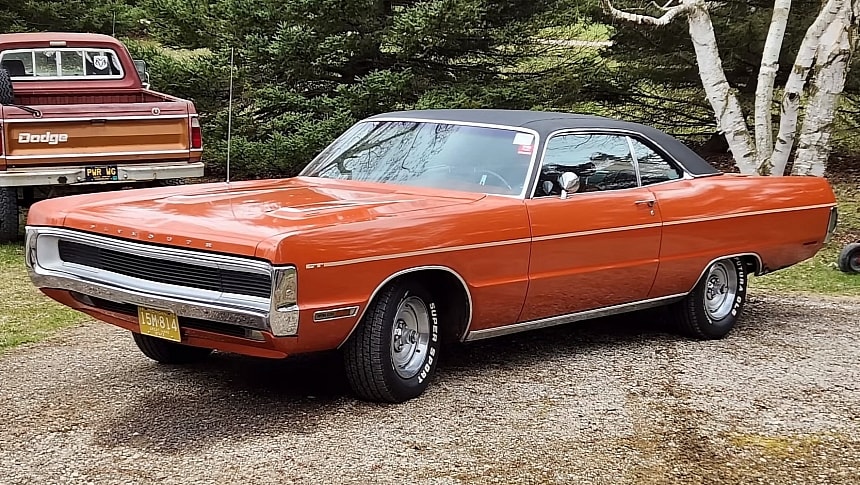When it comes to Plymouths from the golden muscle car era, everyone seems to get excited about the B-body and E-body rigs. I guess that makes sense since the Road Runner, GTX, and Barracuda are among the most desirable Mopars out there. But the Fury should get a lot more attention because this nameplate also spawned a few cool rigs.
The early Fury is arguably the most iconic iteration of the nameplate thanks to Stephen King's "Christine." Originally a sub-series of the Belvedere, the Fury became a stand-alone model in 1959. Three years later, Plymouth downsized the Fury, turning it into an intermediate.
But even though it became a midsize just in time to receive Chrysler's Max Wedge V8, it didn't get a chance to use the more iconic HEMI. That's because Plymouth moved the Fury to the full-size C-body platform for the 1965 model year. But that's not to say that the Fury wasn't a performer during the golden era.
While the HEMI did not make its way into the Fury, the 440-cubic-inch (7.2-liter) RB V8 did, in both four- and six-barrel configurations. The Sport Fury GT you see here is one of those cars.
The GT trim became available for the 1970 model year when Plymouth introduced the fifth-generation version. It combined luxury and performance features and came standard with a 350-horsepower 440 V8. The Six-Pack mill delivered 390 horses. However, because it was introduced at a time when buyers were steering away from muscle cars, the Sport Fury GT was sold in very small numbers.
Specifically, this trim was ordered on only 669 units, three of which were sent to Canada. The Sport Fury S23 is also scarce at 694 examples (four sold in Canada), but the GT is arguably the rarest of the bunch. The Burnt Orange example here features the four-barrel 440, so it's one of 605 cars equipped with this mill.
But the production number isn't the only thing that makes this big Plymouth noteworthy. It also rocks a rare color combo with the interior matching the outer Burnt Orange hue, and it's pretty much an unrestored survivor. It's not 100% original because one quarter panel has been repainted, but it's good enough for me. And the original paint looks surprisingly good for a coating that's more than 50 years old.
The interior is as original as they get, and everything is in tip-top condition, except for a few cracks in the dash and some wear and tear on the seats. This Sport Fury spent a few decades in storage, but it looks like it was parked in a museum and maintained regularly.
Does it still have a numbers-matching engine? Of course! However, the owner points out the engine rocks Hooker headers that were added back in the 1970s. Apparently, someone did a bit of street racing with this land yacht. Thankfully, it survived that era without being damaged. Check it out in the video below.
But even though it became a midsize just in time to receive Chrysler's Max Wedge V8, it didn't get a chance to use the more iconic HEMI. That's because Plymouth moved the Fury to the full-size C-body platform for the 1965 model year. But that's not to say that the Fury wasn't a performer during the golden era.
While the HEMI did not make its way into the Fury, the 440-cubic-inch (7.2-liter) RB V8 did, in both four- and six-barrel configurations. The Sport Fury GT you see here is one of those cars.
The GT trim became available for the 1970 model year when Plymouth introduced the fifth-generation version. It combined luxury and performance features and came standard with a 350-horsepower 440 V8. The Six-Pack mill delivered 390 horses. However, because it was introduced at a time when buyers were steering away from muscle cars, the Sport Fury GT was sold in very small numbers.
Specifically, this trim was ordered on only 669 units, three of which were sent to Canada. The Sport Fury S23 is also scarce at 694 examples (four sold in Canada), but the GT is arguably the rarest of the bunch. The Burnt Orange example here features the four-barrel 440, so it's one of 605 cars equipped with this mill.
But the production number isn't the only thing that makes this big Plymouth noteworthy. It also rocks a rare color combo with the interior matching the outer Burnt Orange hue, and it's pretty much an unrestored survivor. It's not 100% original because one quarter panel has been repainted, but it's good enough for me. And the original paint looks surprisingly good for a coating that's more than 50 years old.
The interior is as original as they get, and everything is in tip-top condition, except for a few cracks in the dash and some wear and tear on the seats. This Sport Fury spent a few decades in storage, but it looks like it was parked in a museum and maintained regularly.
Does it still have a numbers-matching engine? Of course! However, the owner points out the engine rocks Hooker headers that were added back in the 1970s. Apparently, someone did a bit of street racing with this land yacht. Thankfully, it survived that era without being damaged. Check it out in the video below.









